Notes For All Chapters Biology Class 11 CBSE
Biological classification is the scientific procedure of arranging organisms in a hierarchical series of groups and sub-groups on the basis of their similarities and dissimilarities.
1.Need of Classification
There have been many attempts to classify living organisms since ancient times. Aristotle was the earliest to attempt a scientific basis of classification. He used simple morphological characters to classify plants as trees, shrubs and herbs. He also classified animals into two groups,
i.e„ enaima (with red blood) and anaima (without red blood). A need for proper system of classification was always felt.
Living organisms need to be classified because of the following reasons
(i) The study of one or two organisms is not sufficient to know the essential features of the group.
(ii) All kinds of organisms do not occur in one locality.
(iii) Classification helps in knowing the relationship among-est different groups of organisms.
(iv) It helps in knowing the evolutionary relationship between organisms.
Types of Classification System
Depending upon the types of system of classification, organisms are classified into following kingdoms
1. Two Kingdom Classification System
Linnaeus (the father of taxonomy system) divided all the living organisms into two kingdoms in 1758.
These are Plantae and Animalia.
Features of Kingdom-Plantae
The characteristic features of this kingdom are
(a) Cell wall is present.
(b) A big central vacuole is present.
(c) Absorb inorganic nutrieiAs from outside.
(d) Unlimited growth and well defined growing points.
(e) Autotrophic mode of nutrition, reserve food is starch.
(f) No locomotion (except in some lower algae).
(g) Absence of excretory organs, nervous system, sense organs and muscular system.
(h) Slow response to external stimuli.
Features of Kingdom-Animalia
The characteristic features ofthis kingdom are
(a) Absence of cell wall.
(b) Inorganic crystals are not present in their cells.
(c) Central vacuole is not present.
(d) Heterotrophic mode of nutrition.
(e) Growth is limited and well defined growing points are not present.
(f) Reserve food as glycogen.
(g) Excretory organs, nervous system and sense organs are present.
(h) Locomotion is present.
(i) Muscular system is present.
(j) Show quick response to external stimuli.
Objections Against Two Kingdom Classification System
The two kingdom system of classification was accepted for a long time. However, some difficulties arised from this classification as several new living organisms have been discovered.
Some of these difficulties are mentioned below
(a) The first formed organisms were neither plants nor animals.
(b) Fungi do not show similarity with structure, physiology and reproductive system of plants.
(c) It is not easy to recognise the lower organisms as plants or animals. For example, Euglena has mixotrophic (dual) mode of nutrition, while sponges are fixed, branched and irregular creatures like plants.
(d) Slime moulds, a group of fungi, are wall-less in vegetative phase. They develop cell wall in the reproductive phase. Slime moulds can neither be placed in fungi, nor plants.
(e) Lichens are formed by the symbiotic association of an alga and a fungus. They neither resemble plants nor animals.
(f) Prokaryotes do not have an organised nucleus. They have single envelope organisation, absence of spindle apparatus, meiosis and sexual reproduction.
Eukaryotes have a well-defined nucleus, a double envelope organisation, spindle apparatus, meiosis and sexual reproduction.
On the other hand, viruses have no protoplasm and metabolic machinery of their own. Therefore, all of these cannot be kept in a single group.
(g) Unicellular algae like diatoms, euglenoids, dinoflagellates and Protozoa resemble each other.
2. Three Kingdom Classification System
Ernst Haeckel in 1866, classified living organisms into three kingdoms-Plantae, Protista and Animalia. The new kingdom-Protista included all those organisms, which lack the capability of tissue differentiation. These are algae, fungi and Protozoa. Later, kingdom-Protista was reserved only for unicellular organism.
Limitations of Three Kingdom Classification System
Limitations of three kingdom classification are
(a) Prokaryotes and eukaryotes are not separated.
(b) Both unicellular and multicellular organisms are kept in Protista.
3.Four Kingdom Classification System
The four kingdom classification system included Monera in addition to Protista, Plantae and Animalia. Studies with electron microscope made it clear that bacteria and related organisms have a different nuclear structure as compared to others. They are* prokaryotes, thus kingdom-Monera was created by Copeland (1956). Fungi continued to remain with Plantae in this system.
4. Five Kingdom Classification System
This classification was proposed by RH Whittaker, in 1969. Before 1969, the classification systems for the living organisms have undergone several changes overtime.
He created fungi, as separate kingdom.
The main criteria for classification used by Whittaker
(i) Cell structure (ii) Modes of nutrition
(iii) Thallus organisation (iv) Reproduction
(v) Phylogenetic relationships.
Merits of Five Kingdom Classification System
Merits of five kingdom classification system are
(a) Euglena and other transition types which had been included both amongst plants and animals are given proper place under kingdom—Protista.
(b) Fungi have their own biochemical, physiological and structural organisation. They have never been related to plants. In this system of classification fungi are separately placed.
(c) A separate kingdom of prokaryotes include Monera has been created. Monerans differ from all other organisms in their cellular, reproductive and physiological organisations.
(d) The five kingdom classification system is based on cellular organisation, the mode of nutrition and complexity of structure. These were the basic factors used in earliest two kingdom system of classification.
(e) The system shows the gradual evolution of early organisms into plants and animals.
(f) The plant and animal kingdoms are more homogenous than, they were in the two kingdom system of classification.
Demerits of Five Kingdom Classification System
Demerits of five kingdom classification system are
(a) Animal protozoans have been included in kingdom—Protista, which also includes unicellular plants. They show different modes of nutrition.
(b) Yeasts are though, unicellular eukaryotes, do not belong to kingdom—Protista.
(c) Chlorella and Chlamydomonas, though unicellular included under the kingdom-Plantae. They should be kept in Protista.
(d) Euglena like organisms and slime moulds with flexible life style may need the creation of an intermediate kingdom of Protista.
(e) Viruses and viroids are not kept in proper place in this system.
5. Six Kingdom Classification System
It was introduced by Carl Woese a Professor in the Department of Microbiology, University of Illinois in 1990. This system is also named as three domain system as in it organisms are classified into three domains, i.e., Archaea, Bacteria and Eukarya.
It mainly used basic principles of five kingdom system but divides the Monera into two domains Archaebacteria, Eubacteria and other eukaryotes in third kingdom.
i. Archaea
Archaea domain includes prokaryotic organisms. These are characterised by a mono layer core of lipids in the cell membrane and distinct nucleotides in their 16S RNA.
It contains a single kingdom called Archaebacteria. Kingdom-Archaebacteria
This kingdom includes early prokaryotes, which live in extreme conditions of the environment. These are methanogens, halophiles and thermoacidophiles.
ii. Bacteria
The bacteria domain consists of typical prokaryotes that lack membrane covered cell organelles. These do not have microchambers for separating various metabolic activities. It also has a single kingdom-Eubacteria.
Kingdom-Eubacteria
The members of this kingdom have peptidoglycan cell wall, naked DNA in coiled form, glycogen food reserves.
The sap vacuole is not present and 70S ribosomes are present. The members of this kingdom are bacteria, mycoplasma, Actinomycetes, rickettsiae, spiro- chaetes, cyanobacteria, firmicutes.
iii. Eukarya
The domain eukarya contains all the eukaryotes. These living forms are originated by symbiotic association between some archaebacteria and eubacteria.
The four kingdoms ofthis domain are
(a) Protista
(b) Fungi
(c) Plantae
(d) Animalia
2. Monerans and Protistans
As we have already read in the previous about the topic most widely accepted five kingdom classification given by Whittaker in general. Now, we will study in details about the monerans and protistans before the other three kingdoms. This is because, monerans are thought to have given rise to the protistans from which the remaining three has been evolved along the separate lines.
KingdomMonera
The kingdom-Monera includes all prokaryotes such as bacteria, mycoplasma, Actinomycetes and cyanobacteria (blue-green algae).
The characteristicfeaturerofkingdomr-Monera are given below
(i) They are simplest or most primitive, unicellular prokaryotes.
(ii) The cell wall contains peptidoglycan or murein (no cellulose) and the membrane bound cell organelles are not present.
(iii) They have various types of nutrition like saprophytic, parasitic, chemoautotrophic, photoautotrophic and symbiotic.
(iv) DNA is naked. It lies inside the cytoplasm in coiled form. This is called nucleoid.
(v) The flagella, if present are single-stranded instead of being 11 stranded as in eukaryotes. These contain a protein called flagellin.
(vi) Reproduction is by asexual method. Gametes are not present.
(vii) Mitotic spindle is absent.
(viii) Some of the monerans have the ability to fix-nitrogen into useful nitrates.
I. Bacteria
The term Bacteria was proposed by Ehrenberg in 1829. They have widespread distribution be it air, water or soil. They can survive in extreme range of temperatures like up to 78°C and -190°C.
Important characteristics of bacteria are
(i) Bacteria are found in all kinds of habitats.
(ii) They are prokaryotic microorganisms.
(iii) They are unicellular.
(iv) Cell wall contains peptidoglycan.
(v) An organised nucleus in absent.
(vi) Extrachromosomal self replicating DNA segments called plasmids occur in most of the bacteria.
(vii) Mitochondria, plastids, Golgi apparatus,endoplasmic reticulum and other membrane covered cell organelles are absent.
Size
The size of bacterial cell ranges from 1-10 Jim in length and from 0.7-1.5 flm in width.
Shape
The bacteria possess the following forms
(i) Coccus (PI. cocci) bacteria are oval or spherical cells without flagella. The spheres occur as single cells (Monococcus), a pair of cells (Diplococcus), in groups of four cells (Tetracoccus), as chain of cells (Streptococcus) or in sheets (Staphylococcus).
A few cocci may also occur in cube-like arrangements of 8 or more cells (Sarcina).
(ii) Bacillus (PI. bacilli) bacteria are rod-shaped cells which many occur singly (Monobacillus), in pairs (Diplobacillus), in chains (Streptobacillus) or as a layer (suck) with many cells called Palisade bacillus.
(iii) Spirillum (PI. spirilla) bacteria are cells, which are twisted, like a screw. They occur as free single cells, e.g., Spirillum, Spirochaete, etc.
(iv) Vibrio are cells which are curved, C-shaped or comma-shaped, e.g., Vibrio cholerae.
Apart from these some other shapes of bacteria are also found
Note:
Bacteria were discovered by Anton von Leeuwenhoek (1632-1723). He observed bacteria in 1675.
Louis Pasteur laid the foundation of Bacteriology by developing culture techniques.
Structure
A bacterial cell is covered by mucilage. It is differentiated into cell wall, plasma membrane, cytoplasm, nucleoid, plasmids, inclusion bodies, flagella, pilli and fimbriae. Membrane bound organelles are absent.
Details about the structure of bacteria (prokaryotes) will be studied later in chapter 8th of this book.
Nutrition
Bacteria show both autotrophic and heterotrophic mode of nutrition, i.e., mixotrophic.
On the basis ofmode ofnutrition, bacteria are of two types
i. Autotrophic Bacteria
These are offolbwing two types
(a) Photosynthetic These bacteria have green – sunlight trapping pigment called bacteriochlorophyil.
These are found at the bottom of ponds and lotus. Bacterial photosynthesis does not release oxygen.
(b) Chemosynthetic These bacteria are able to synthesise organic food from inorganic raw materials with the help of energy derived from
• exergonic chemical reactions. Examples Nitrifying bacteria (Nitrosomonas), iron bacteria (Ferrobacillus ferroxidants), sulphur oxidising bacteria (Beggiatoa).
ii. Heterotrophic Bacteria
These bacteria obtain food from different sources. These may be offolbwing types
(a) Saprophytes These are called decomposers, detrivores or transformers. These obtain food by decomposing dead-bodies, excreta of animals, dead plants and their parts.
(b) Parasites These are disease causing bacteria called as pathogens, e.g., Salmonelb typhimurium, which causes typhoid in human.
(c) Symbionts These bacteria live in mutually beneficial association with other organisms, e.g., Rhizobium and Bacillus, species form nodules in root of leguminous plants.
Reproduction
Bacteria reproduce by asexual and sexual (parasexual) processes.
i. Asexual Reproduction
Asexual reproduction occur by binary fission and endospore formation.
(а) Binary Fission It is a simple cell division in which bacterial cell divides in two parts. A constriction appears at the centre of the cell, deepens further and grows from margin to centre and finally two cells are produced.
(b) Endospore Formation Endospores are perennial structures which help in survival even during harsh environmental conditions, e.g., in Cbstridium and Bacillus. The endospore has many wall layers. It has heat resistant chemicals called sialic acid and dipicolinic acid.
ii. Sexual Reproduction
Sexual reproduction occurs by a parasexual process actu called genetic recombination.
The three methods involved are asfolbws
(a) Conjugation The male cell (donor cells) has fertility plasmid or F-factor, which connect itself to cell wall of female cells (receipient cells).
(b) Transformation The process was discovered by Griffith in 1928. It is a process where segments of DNA are transferred from one bacterial cell to another via the liquid medium.
(c) Transduction During this process, the segment of DNA are transferred from one bacterium to another by the viruses (bacteriophages).
Uses of Bacteria
Bacteria is useful in the following ways
(i) Bacteria are natural scavangers. They obtain their nutrition by decomposing dead bodies, dead plants and animal excreta.
(ii) These are used in fermentation process for vinegar manufacturing, yogurt making, etc.
(iii) Some bacteria help in retting of jute and coconut plant fibres. The separated fibres are used in making ropes or gunny bags.
(iv) The genus Streptomyces has many species used to produce different antibiotics.
Some important antibiotics using various bacteria are neomycin, … omycetin, streptomycin, gramicidin, bacitracin.
(v) Bacteria play important role in different steps of nitrogen cycle. Some important bacteria in nitrogen cycle, e.g, Clostridium, Azotobacter (soil bacteria), Rhizobium leguminosarum, Bacillus radicicola (in nodules), Nitrosomonas, Nitrosobacter, Pseudomonas etc.
Harmful Effects of Bacteria
Bacteria is harmful in the following ways
(i) Some saprophytic bacteria like Lactobacillus spoil milk and milk products.
(ii) Food poisoning occurs due to the production of toxins by some bacteria like Clostridium botulinum. They cause botulism, which can kill humans by respiratory paralysis.
(iii) Bacteria are responsible for various plant diseases like citrus canker in lemon leaves and fruits, soft rot in carrot plants, blight disease in rice plants, crown gall disease in apple trees and rose plants.
(iv) In humans, bacteria cause diseases like cholera (Vibrio cholerae), gastric ulcer (Heliobacter pylori), tuberculosis (Mycobacterium tuberculosis), sexually transmitted diseases like gonorrhoea(Neisseriagonorfhoeae), syphilis (Treponema pallidum), etc.
(v) In animals like horse, cattle and sheep, anthrax disease is caused by Anthracis.
II.Archaebacteria
Archaebacteria (Archae-ancient; bact—rod) are special since, they live in some of the most harsh habitats such as extreme salty areas (halophiles), hot springs (thermoacidophiles) and marshy areas (methanogens).
The characteristics of this domain are
(i) They are most primitive prokaryotes.
(ii) They are found in stressed environment, such as high salt content (Great salt lake, the dead sea), edge of the ocean, hot sulphur springs, volcanic walls, etc.
(iii) Their cell walls lack peptidoglycan. In most cases, the wall composed of non-cellulosic polysaccharides and some proteins. In some members, there is no cell wall. This feature of having different cell walls is responsible for their survival in extreme condition.
(iv) Most of the archaebacteria are chemoautotrophs.
Types of Archaebacteria
Archaebacteria are of following three types
i. Methanogens
These are stricdy anaerobes. They live anaerobically in gut of several ruminants such as cows, buffaloes, goat, etc. These bacteria help in fermentation of cellulose. They produce almost 65% of atmospheric methane.
Example Methanobacterium, Methanobacillus, Methanosarcina and Methanococcus.
ii. Halophiles
These are found in extreme saline environments like salt lakes, • salt marshes, salt pans, salt solutions, etc. They are mosdy anaerobes. They contain a chemical called halorhodopsin to pump in chlorides into the cell to prevent cellular dehydration. Halobacterium develops purple membrane having photoreceptor pigment bacteriorhodopsin. In light, it acts as a proton pump and helps in synthesise of ATP. The formation of ATP is a survival mechanism under anaerobic condition. Examples Halobacterium and Halococcus.
iii. Thermoacidophiles
These archaebacteria can live in both extreme heat and acidic pH (around 2) environment. Under anaerobic conditions, these organisms oxidise sulphur to sulphuric acid.
2S+ 2H2O+ 3O2 —> 2H2SO4 + Energy
Thermoacidophiles can survive in high temperature and low pH conditions because of
(a) Special branched chain lipids in cell membranes that reduce cell fluidity.
(b) Enzymes can work at low pH.
(c) Enzymes are resistant to high temperature coagulation. Examples Sulfobolus, Thermoplasma and Thermoproteus.
Importance of Archaebacteria
Archaebacteria can live in extreme environments, so they are useful in
(i) Modern biotechnology
(ii) Generation of biogas
(iii) Thermophilic enzymes
(iv) Biosensors
(v) Restriction enzymes, etc.
Differences between Eubacteria and Archaebacteria
III. Eubacteria
They are called ‘true bacteria’ and are characterised by the presence of a rigid cell walls, and if motile, have flagellum.
Cyanobacteria
Cyanobacteria, member of this group (blue-green algae) have many characters similar to bacteria. The examples of cyanobacteria are Nostoc, Oscillatoria, Spirulina, Rivularia, Anabaena, etc. They can survive in a wide variety of habitats, such as hot springs, sea water, polluted water, etc.
Cyanobacteria have following three forms
(i) Unicellular as in Chrococcus.
(ii) Colonial as in Microcystis and Gloeocapsa.
(iii) Filamentous as in Nostoc, Oscillatoria and Anabaena.
Cell Structure
Cell has a definite firm and rigid cell wall surrounded by mucilaginous sheath. The cell wall is followed by plasma membrane made up of lipid and proteins. The membrane bound structures like true mitochondria, endoplasmic reticulum, Golgi bodies, etc., are absent.
The photosynthetic pigment present in the cell are chlorophyll-^, ^-carotene, myxoxanthophyll, myxoxan- thin, etc. The nucleolus is absent and the nucleoid is not bound by nuclear membrane.
Some cyanobacteria (Nostoc, Anabaena, Scytonema, etc.) possess special type of cells called heterocysts to perform special functions. Heterocysts are the sites of nitrogen fixation.
Nutrition
Cyanobacteria are mosdy photoautotrophs. They contain chlorophyll-a and other photosynthetic pigments.
Reproduction
Cyanobacteria multiply asexually and vegetatively. Sexual reproduction does not occur.
The types of multiplication are
(i) Binary fission occurs in unicellular forms.
(ii) Fragmentation occurs in colonial and filamentous forms.
(iii) Conidia are asexually produced spores of fungi.
(iv) Endospores and exospores are non-reproductive structures.
Differences between Bacteria and Cyanobacteria
Uses of Cyanobacteria
Some uses of cyanobacteria are
(i) Some cyanobacteria have the ability to fix atmospheric nitrogen. The green manuring by farmers is done on this basis to enrich the soil with nitrogenous fertilisers.
(ii) Cyanobacteria like Anabaena, Tolypothrix, etc., help in prevention of soil erosion and its conservation.
(iii) Spirulina is a protein rich supplement for humans. It is a fast growing cyanobacteria. It is also known as Single Cell Protein (SCP).
(iv) Cyanobacteria like Anabaena and Aulosira prevent mosquito larvae to grow in surroundings.
Harmful Effects of Cyanobacteria
Some harmful effects of cyanobacteria are
(i) Cyanobacteria discolour the walls and roofs of buildings, movements and statues.
(ii) Oscillatoria causes asthma and gastrointestinal problems by releasing its toxins.
(iii) Growth of Oscillatoria in water bodies shows pollution by organic matter.
(iv) Excessive growth of cyanobacteria form water blooms, which decreases oxygen level in water causing death of aquatic animals.
IV. Mycoplasma
Mycoplasma are organisms that completely lack a cell wall.
They were discovered by Roux (1898) in pleural fluid of cattle suffering from pleuropneumonia. The organisms are often called MLOs (Mycoplasma Like Organisms) or PPLOs (Pleuropneumonia Like Organisms).
The characteristic features of mycoplasma are
(i) Their size ranges from 0.1-0.5 pm and have organised nucleus, plastids, mitochondria and other organelles are absent.
(ii) DNA is naked (because of absence of histones) and ribosomes (of 70S type).
(iii) Mycoplasma possess heterotrophic nutrition. Examples Mycoplasma gallisepticum, M. laidlawii. They cause pleuropneumonia in domestic animals, mycoplasmal urethritis in humans.
Kingdom-Protista
Kingdom—Protista includes all single-celled eukaryotes but, the boundries of this kingdom are not well defined. It was first proposed by Ernst Haeckel (1866). Physiologically kingdom-Protista acts as a connecting link between the kingdom-Monera and the complex multicellular kingdom-Fungi, Plantae and Animalia. Kingdom-protista includes the following categories such as dinoflagellates, chrysophytes, euglenoids, slime moulds and protozoans.
The general characteristic features ofkingdom-Protista are given below
(i) These are mosdy aquatic organisms. Some protists also live in the bodies of animals as parasites.
(ii) The cells are eukaryotic. These contain membrane bound cell organelles like mitochondria, Golgi complex, endoplasmic reticulum, 80S ribosomes, etc.
(iii) Locomotion may either occur by Pseudopodia (Amoeba, Euglypha), Cilia (Parameciuni),
Wriggling (sporozoans, non-flagellates) and Mucilage propulsion (some protists like diatoms).
Diatoms do not have any organelles for locomotion.
(iv) Protists shows various modes of nutrition such as
(a) Photosynthetic (holophytic) Dinoflagella- tes, diatoms and euglenoids.
(b) Halozoic (zootrophic) Protozoans like Amoeba and Paramecium.
(c) Saprobic (saprotrophic) In slime moulds.
(d) Parasitic Trypanosoma, Giardia, Plasmodium, Entamoeba.
(e) Mixotrophic InEuglena.
(f) Symbiotic In zooflagellates like Trichonympha and Lophomonas.
(g) Pinocytosis In Amoeba to absorb soluble organic substances.
(v) Most of the protists are aerobic. However, some protists that live at the bottom of aquatic habitats can respire anaerobically.
(vi) Protists reproduce asexually and sexually by a process involving cell fusion and zygote formation.
Protista Kingdom and its Phylum
The major groups of Protista are
(а) Protistan algae (photosynthetic protists)
(b) Slime moulds (consumer-decomposer protists).
(c) Protozoan protists.
Photosynthetic Protists
These chrysophytes form the main part of phytoplankton. These include chrysophytes, dinoflagellates and euglenoids.
1. Chrysophytes
This group includes diatoms and golden algae (desmids).
i. Diatoms
(a) Diatoms occur in all aquatic and moist terrestrial habitats and are also known as chief producer in the ocean.
(b) They pile up at the bottom of water reservoirs and form big heaps called diatomaceous earth.
(c) They are microscopic unicellular organisms of
different shapes, such as circles, semicircles, triangular, spindle-shaped, boat-shaped, etc.
(d) The body wall of the diatoms is made up of cellulose impregnated with glass like silica. The cell wall has two overlapping halves like a sapbox called shell or ffustule, i.e., a lid and a lower half fitted together.
(e) Diatoms are variously coloured, do not passess flagella except in the reproductive state.
(f) Each cell has a large central vacuole.
(g) Chloroplast are yellowish brown to greenish brown. They contain chlorophyll-^ and c. They contain fucoxanthin that provides brownish ting.
(h) Food is reserved in the form of oils and leucosin (polysaccharide).
(i) The diatoms mostly reproduce asexually by binary fission. Sexual reproduction varies from isogamy to oogamy. Examples Navicula, Amphipleura , Triceratium and Cymbella.
Economic Importance of Diatoms
* Diatoms are economically important in the following ways –
* Diatoms are very important photosynthesizers.
* Diatomite deposits are often accompanied by petroleum fields.
* These are used as a cleaning agent in tooth pastes and metal polishes and are used in filtration of oil and syrups.
* Diatoms are used as insulation material in refrigerators boilers and furnaces. These are also used to make sound-proof rooms.
* Diatoms are also very good pollution indicators.
ii. Golden Algae (Desmids)
These are unicellular green algae. Their cell walls have distinct halves. Sexual reproduction occurs by ‘conjugation’ (similar to Spirogyra). They are usually found in freshwater and acts as an indicators of polluted water.
2. Dinoflagellates
These are mainly marine and photosynthetic organism. There are about 1,000 species of photosynthetic protists.
The general characteristic features of dinoflagellates are listed below
(i) These are important phytoplanktons. Most of them are marine but some occur in freshwater.
(ii) They appear yellow, green, brown, blue or red depending on the main pigments present in their cells.
(iii) The cell wall in dinoflagellates, if present is composed of number of plates made up of cellulose.
Some dinoflagellates like Gonyautax and Gymnodinium grow in large number in sea and make the water look red and form ‘red tide’.
Toxins released by such large numbers may even kill other aquatic animals.
(iv) The cells usually possess two flagella which are of different types (heterokont). One flagellum is transverse arising from the anterior part. The other flagellum arises in the vertical furrow. Both these flagella beat in different directions.
(v) The nucleus is bigger in size, named as mesokaryon. Chromosomes do not have histone and RNA.
(vi) The cells possess an osmoregulatory organelle called pusule, which superficially looks like contractile vacuole.
(vii) Dinoflagellates reproduce asexually through cell division or by the formation of zoospores and cysts.
(viii) Varieties of eye spots’ occur in dinoflagellates. Some of them are like ocelli.
(ix) Reserve food is stored in the form of starch and oils, e.g., Gonyaulax, Ceratium, Noctiluca, Peridinium and Gymnodinium, etc.
3. Euglenoids
Euglenoids live in fresh aquatic habitats and damp soils.
The characteristic features of euglenoids are described below
(i) They are unicellular flagellate protists.
(ii) Body is covered by thin and flexible pellicle. It lacks ceflulosic cell wall.
(iii) Euglenoids have two flagella, usually one long and one short.
(iv) They perform creeping movements by expansion and contraction of their body. This phenomenon is called metaboly.
(v) Nutrition is holophytic, saprobic or holozoic. This mode of nutrition is called mixotrophic.
(vi) The photosynthetic pigments include chlorophyll-^ and b.
(vii) Reserve food is carbohydrate in the form of paramylon
or paramylum bodies.
(viii) Euglenoids reproduce by longitudinal binary fission under favourable conditions. The palmella stage is found during unfavourable conditions. Examples Euglena, Perenema, Eutreptia, Phacus, etc.
Euglena is considered as plant as well as animal. It is also called as plant animal.
Plant and animal features are * Plant Features Chloroplasts and chlorophyll are present has holophytic nutrition.
* Animal Features Presence of pellicle which is not made of cellulose. Contractile vacuole is present. Longitudinal binary fission.
Note:
* Euglenozoa is a diverse clade that includes predatory heterotrophs, photosynthetic autotrophs and pathogenic parasites.
* The main feature that distinguishes protists in this clade is the presence of a spiral or crystalline rod of unknown function inside the flagella.
Consumer-Decomposer Protists (Slime Moulds)
They possess the characters of both animals and fungi.
Slime Moulds
Slime moulds are saprophytic protists. Anton De Bary (1887) related them to animals and called them as Mycetozoa. These are also named as fungus animals because they share the common characters of both animals and are known as protistian jungi, and due to their protistian nature.
The generalfeatures of slime moulds are discussed here (t) Slime moulds are acellular and cellular types, about 600 species of slime moulds are reported by biologists out of which 27 species are known from India.
(ii) They are found in moist terrestrial places rich in decaying organic food.
(iii) The body of slime moulds is covered with mucilage having gelatinous consistency, they do not have chlorophyll.
(iv) They are surrounded by plasma membrane. However, the spores have the ceflulosic cell walls.
(v) They show phagotropic or saprotrophic nutrition.
(vi) Both sexual and asexual modes of reproduction occur.
(vii) They are like Protozoa in their amoeboid plasmodial stage and similar to true fungi in spore formation.
(viii) Acellular slime moulds (plasmodial slime moulds) are commonly found on dead and decaying plant matter. The cellular slime moulds occur in all humus-containing upper layer of damp soil. When the food supply is shorter or conditions are not favourable, the amoeboid cells form aggregate without any fusion.
This aggregated mass is called pseudoplasmodium. The examples of cellular slime moulds are dictyostelium and polysphondylium.
(ix) Plasmodium is the free-living thalloid body of the acellular slime moulds. It is wall-less mass of multinucleate protoplasm covered by slime layer. During unfavourable conditions, the Plasmodium differentiates and forms fruiting bodies bearing spores at their tips. WTiile during favourable conditions, Plasmodium can spread over several feet.
(x) Slime moulds are beneficial as they cause the decomposition of organic matter in the soil.
Protozoan Protists
Include unicellular protists with animal like behaviour.
They were first studied by Leeuwenhoek (1677).
Protozoan protists may be aquatic, terrestrial or parasites.
They can cause several diseases in humans and animals.
General characteristics of protozoans are described below
(i) They are microscopic small unicellular and colourless organism with different shapes.
(ii) Locomotion occurs with the help of finger-like pseudopodia, flagella or hairy cilia.
(iii) All protozoans are heterotrophs and live as predators or parasites.
(iv) Respiration occurs through the general surface of the body.
(v) Reproduction occurs by binary fission, multiple fission or budding. Sexual reproduction occurs by syngamy and conjugation.
There are four major groups of protozoans
1. Amoeboid Protozoans
These organisms live in freshwater, seawater or moist soil.
Examples Amoeba, Entamoeba, Radiolarians, Pelomyxa, Foraminiferans and Heliozoans.
General features of this group are following
(i) They move and capture their prey by putting out pseudopodia (false feet) as in Amoeba (as mouth is absent).
(ii) The body is without periplast. It may be naked or have a calcareous shell.
(iii) Flagella are present in some developmental stages. They also develop when food become scarce.
(iv) Nutrition is holozoic.
(v) Asexual reproduction occurs by binary fission, multiple fission, spores and budding and sexual reproduction occurs by syngamy.
2. Flagellated Protozoans
The members of this group are either free-living or parasitic. Examples Giardia, Trypanosoma, Leishmania, Trichonympha and Trichomonas.
General features of this group are following
(i) They have flagella for locomotion as their name suggests.
(ii) They may be aquatic, free-living, parasitic, commensals or symbiotic.
(iii) The body is enclosed by a firm pellicle.
(iv) Nutrition is holozoic, saprobic and parasitic.
(v) Asexual reproduction is by binary fission.
(vi) Sexual reproduction is observed in some forms only.
(vii) Various species of these protozoans causes diseases in humans. For examples,
* Trypanosoma (sleeping sickness)
* Leishmania (kala-azar, dum-dum fever)
* Giardia (giardiasis)
* Trichomonas (leucorrhoea).
3. Ciliated Protozoans
These are aquatic, actively moving organisms because of the presence of thousands of cilia.
Examples Paramecium, Opalina, Vorticella, Podophyra, Balantidium, etc.
Generalfeatures of this group are following
(i) Many ciliates live as free-living individual in fresh % and marine water (Paramecium).
(ii) A large number of cilia present on whole body surface.Cilia are used to capture food and for locomotion.
(iii) Nutrition is holozoic except in some parasitic forms.
(iv) The body is covered with flexible pellicle.
(v) There are definite regions for ingestion and egestion.
(vi) Ciliates have a larger macronucleus and smaller micronudeus.
(vii) They have small ejectable trichocysts for defense.
(viii) Osmoregulation occurs by contractile vacuoles.
(ix) Asexual reproduction occurs by transverse binary fission or budding. Cyst formation also occurs during unfavourable condition.
(x) Sexual reproduction by means of conjugation.
Sporozoan Protozoans
This group includes organisms that have an infections spore-like stage in their life cycle.
Examples Plasmodium, Monocystis, Eimeria.
General features of this group are following
(i) All sporozoans are endoparasites and pathogenic.
(ii) Locomotory organs are absent.
(iii) Nutrition is parasitic (absorptive).
(iv) Body is covered with an elastic pellicle or cuticle and contractile vacuoles are absent.
(v) A sexual reproduction occurs through multiple fission and sexual reproduction by syngamy.
(vi) Life cycle may include two different hosts, e.g., Plasmodium requires two hosts (digenetic), female Anopheles mosquito and human beings. It is responsible for causing malaria, in humans.
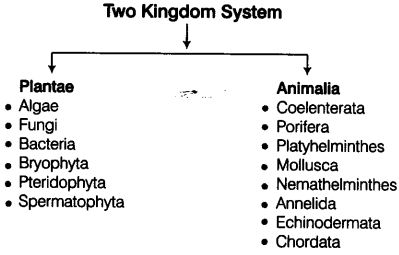

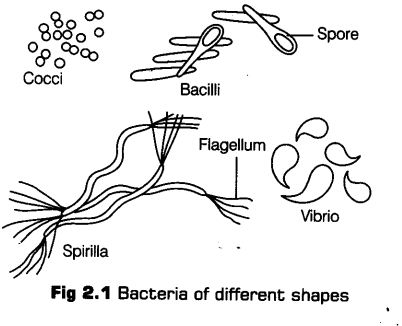
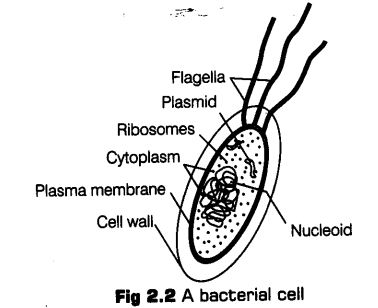
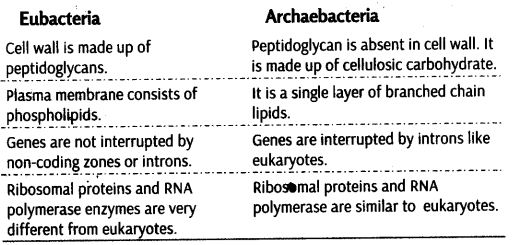
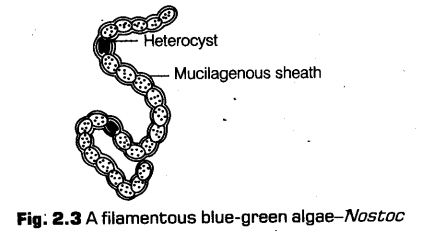
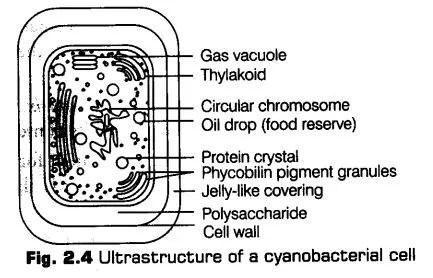
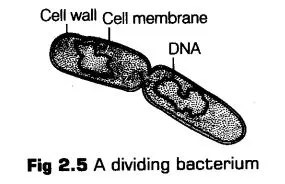
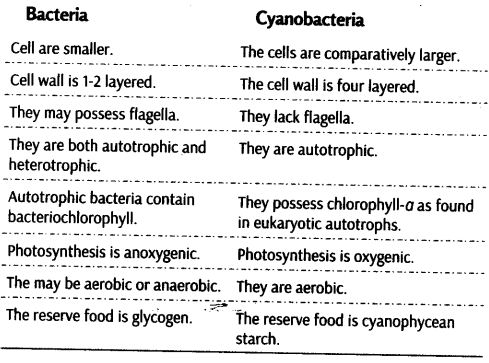
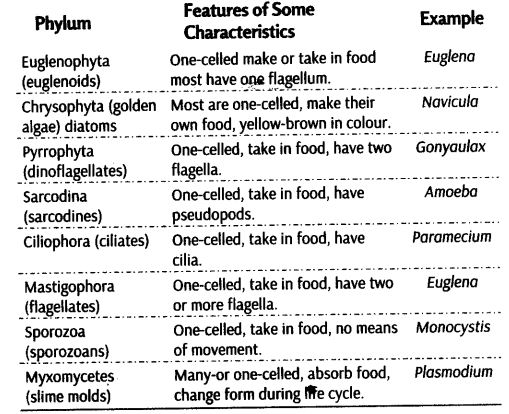
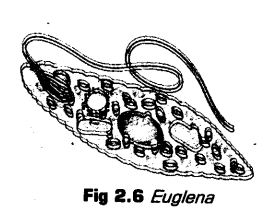
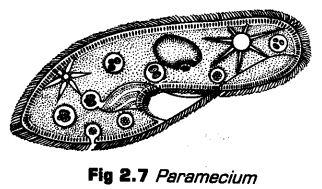

Leave a Reply